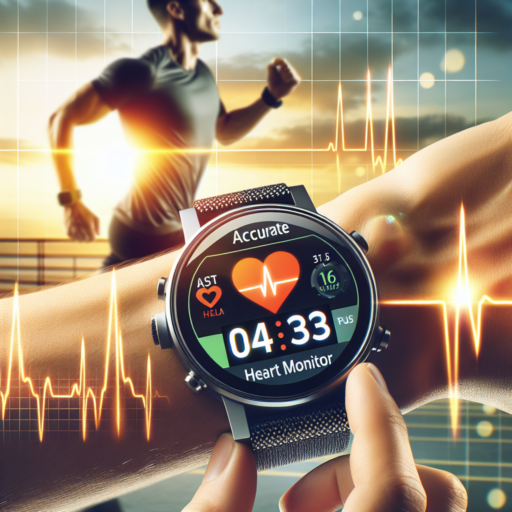Do heart rate monitors work while swimming?
Heart rate monitors have become versatile tools for athletes across various sports, including swimming. The question of whether these devices function effectively underwater is significant for swimmers looking to track their physical performance meticulously. Modern technology has led to advancements that make swimming with a heart rate monitor not just possible but also practical. Manufacturers have specifically designed models to withstand water pressure and provide accurate readings despite the challenges aquatic environments pose.
When considering a heart rate monitor for swimming, it’s essential to understand that not all devices are created equally. Certain features make some heart rate monitors more suitable for water activities than others. For instance, waterproof rating, connectivity, and the sensor’s design play pivotal roles in ensuring the reliability and accuracy of data transmitted from the water. Fitness enthusiasts should look for devices that offer a waterproof rating suitable for the depth and duration of their swimming activities to guarantee effectiveness.
Moreover, understanding the technology behind how heart rate monitors work while submerged is crucial. Wireless transmission in water, especially for models that rely on Bluetooth or ANT+ connectivity, faces unique challenges due to the way water interferes with signal propagation. However, manufacturers have innovated around these obstacles by enhancing the way signals are transmitted or by integrating the monitor directly into swim gear. This adaptability emphasizes the progress in making heart rate monitoring during swimming a reality for athletes of all levels.
What watches track heart rate while swimming?
For avid swimmers looking to monitor their heart rate during their aquatic exercises, the market offers a variety of watches designed with waterproof capabilities and heart rate monitoring features. These devices not only track your heart rate but are also engineered to withstand the pressure and environment of swimming pools and open water. Understanding the key functionalities and features of these watches can help you choose the best one to suit your swimming and fitness needs.
Most modern sports watches come equipped with advanced technology that allows for accurate heart rate monitoring under water. These watches employ either optical heart rate sensors that measure blood flow through the skin or chest straps that send data wirelessly to the watch. While optical sensors offer the convenience of being built into the watch, chest straps are known for their higher accuracy, especially in water environments where constant movement might interfere with the optical sensor’s readings.
Additionally, these swim-friendly heart rate monitors often include features such as stroke detection, pace tracking, and SWOLF scores to help swimmers analyze their performance in real-time. The durability of these watches, characterized by water resistance ratings, varies by model and brand but generally supports depths suitable for swimming activities. It’s important for users to check the specific water resistance level to ensure it aligns with their swimming environment, whether that’s in a pool, lake, or the ocean.
No se han encontrado productos.
Does Garmin heart rate work while swimming?
When looking into the capabilities of Garmin devices, a common question arises among fitness enthusiasts and swimmers alike: Does Garmin heart rate work while swimming? This query is grounded in the desire to accurately track performance and physiological responses in all exercise conditions, water-based activities included. Garmin has invested significantly in technology to cater to athletes across all spectrums, ensuring that their devices are not only versatile but also reliable under various conditions.
Not all Garmin devices are created equal, however, when it comes to monitoring heart rate while submerged. The company offers specific models designed with swimmers in mind, integrating technology capable of tracking heart rate data underwater. These models utilize optical heart rate sensors, which, in theory, can face challenges when in direct contact with water. Yet, Garmin has optimized the functionality to ensure accuracy and consistency in reading heart rate during swimming sessions. It is vital for users to choose the right model to guarantee the tracking works as expected.
In addition to the built-in optical sensors, Garmin also offers external heart rate monitors that can be worn around the chest. These are specifically engineered to work in aquatic environments, providing an alternative for those serious about capturing every beat even when immersed. The chest strap pairs with compatible Garmin devices, offering a seamless transition from land to water activities without skipping a beat in heart rate monitoring.
Is Polar H10 good for swimming?
The Polar H10 heart rate monitor has been a game-changer for athletes and fitness enthusiasts who are keen on tracking their performance accurately, not only on land but also in water. When it comes to swimming, the Polar H10 stands out for its waterproof design and advanced features that cater specifically to the needs of swimmers.
One of the key aspects that make the Polar H10 ideal for swimming is its 5 kHz transmission capability. This feature enables the heart rate sensor to communicate with compatible devices even when submerged. This means that swimmers can continuously monitor their heart rate without interruption, providing real-time data that is crucial for training and performance optimization.
Enhanced Accuracy and Comfort
The comfort and fit of a heart rate monitor are critical during vigorous activities like swimming. The Polar H10 addresses this by offering a soft, textile strap that is both comfortable and adjustable, ensuring that it stays secure without causing any discomfort during strokes. Moreover, its enhanced electrodes make the Polar H10 highly accurate, giving swimmers reliable heart rate data to rely on.
Durability in Chlorinated and Salt Water
Another significant feature of the Polar H10 is its durability. Whether you’re swimming in a pool with chlorinated water or braving the open sea, the Polar H10 is designed to withstand different types of water environments. This robustness assures athletes of the device’s longevity, making it a smart investment for regular swimmers.




